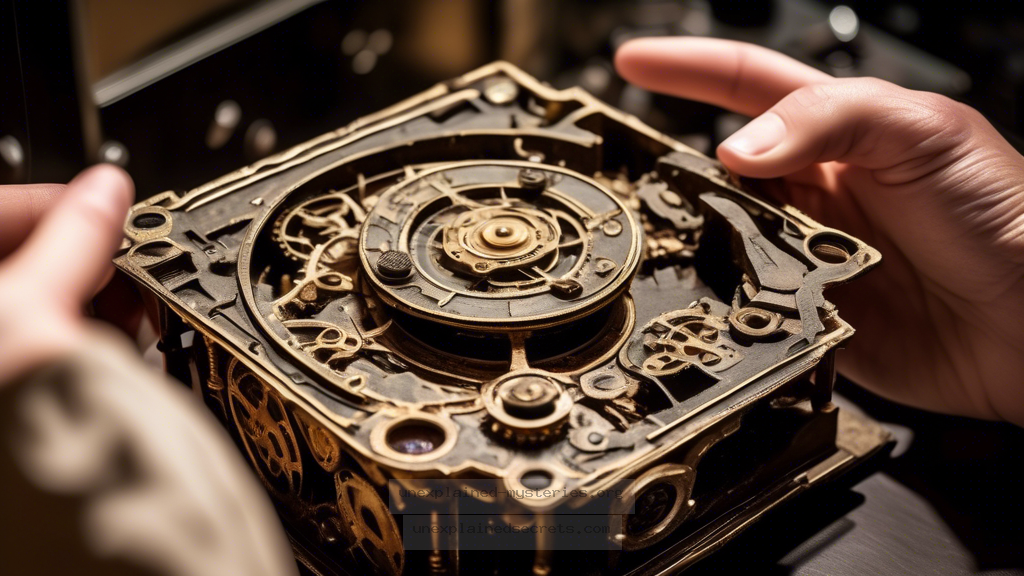What Secrets Lie Within the Antikythera Mechanism, the World’s First Analog Computer?
What Secrets Lie Within the Antikythera Mechanism, the World’s First Analog Computer?
The Antikythera Mechanism has captivated historians, archaeologists, and scientists since its discovery in 1901. Often regarded as the world’s first analog computer, this ancient artifact raises more questions than it answers. How did a civilization that existed over two millennia ago create such an advanced piece of technology? What secrets does it hold about the knowledge and capabilities of ancient Greek society? In this post, we delve into the enigma of the Antikythera Mechanism, exploring its historical context, theoretical implications, and the ongoing research that continues to unveil its mysteries.
Historical Context of the Antikythera Mechanism
Discovered among the wreckage of a ship off the coast of the Greek island Antikythera, this intricate device dates back to around 150-100 BCE. It was found alongside various artifacts, including statues and pottery, which gave insights into the maritime trade and cultural exchanges of that era. What sets the Antikythera Mechanism apart is its astonishing complexity; it comprises at least 30 gears, crafted from bronze, and is thought to have been used to predict astronomical positions and eclipses for calendrical and astrological purposes.
The mechanism’s construction suggests that the ancient Greeks possessed a sophisticated understanding of mathematics and astronomy. Theories suggest that it was designed by a mathematician or philosopher, possibly even influenced by earlier Babylonian or Egyptian astronomical systems. This raises critical questions about the transmission of knowledge and the technological capabilities of ancient civilizations.
Core Concepts and Theories Surrounding the Mechanism
The Antikythera Mechanism operates on a system of gears and dials, representing celestial bodies and their movements. It features two main dials: one for the solar calendar and another for the lunar calendar, which could track the Metonic cycle—a 19-year cycle used to predict lunar phases. This level of precision implies that the Greeks had access to advanced mathematical principles long before the development of similar devices in later eras.
Research has revealed that the mechanism was also capable of forecasting eclipses, a feat that underscores the ancient Greeks’ remarkable understanding of celestial events. The device’s design has led some historians to speculate that it could have been used for navigation or even for astrological purposes, suggesting a blend of science and mysticism in ancient Greek culture.
Practical Implications of the Antikythera Mechanism
The implications of the Antikythera Mechanism extend beyond mere curiosity; it challenges our understanding of technological evolution. The existence of such an advanced device during a time when many societies were still reliant on rudimentary tools prompts a reevaluation of the linear progression of technology. If the Greeks could create a mechanism that could accurately predict celestial events, what else might they have known that has been lost to history?
Key Insight: The Antikythera Mechanism suggests that advanced technology existed in ancient civilizations, challenging the narrative that such capabilities only emerged during the Renaissance.
Alternative Perspectives on Its Purpose
While many theories posit that the Antikythera Mechanism was primarily an astronomical device, some researchers propose alternative uses. For instance, it could have been employed as a tool for astrological predictions, which were of significant importance in ancient Greek society. Astrology influenced various aspects of life, including politics and personal decisions, suggesting that the mechanism may have had broader implications than merely tracking celestial bodies.
Additionally, some speculate that it could have served as a teaching tool for students of astronomy, allowing them to visualize the complex movements of celestial bodies. This perspective opens the door to understanding the educational practices of ancient Greece and their emphasis on celestial phenomena.
Common Misconceptions and Clarifications
One common misconception is that the Antikythera Mechanism was a solitary artifact with no predecessors. However, evidence suggests that the Greeks built upon knowledge from Babylonian and Egyptian sources, indicating a continuum of intellectual development. Furthermore, some believe it to be a one-off creation, yet recent discoveries of similar gear-driven devices suggest a more widespread understanding of such technology in ancient societies.
Another misconception involves the mechanism’s complexity being viewed as an anomaly. In reality, it reflects the broader trend of technological innovation in the Hellenistic period, characterized by advancements in various fields, including engineering, mathematics, and astronomy.
Investigation and Study: Best Practices
For those interested in studying ancient artifacts like the Antikythera Mechanism, several best practices can enhance research outcomes. First, collaboration is key; interdisciplinary teams comprising historians, archaeologists, and scientists can offer diverse perspectives and expertise. Second, employing advanced imaging techniques, such as X-ray fluorescence and 3D scanning, can provide further insights into the construction and functionality of these artifacts. Lastly, engaging in public discourse through lectures, exhibitions, and publications can foster greater interest and support for ongoing research.
Best Practice: Collaborative research across disciplines enhances understanding and conservation of ancient artifacts.
Future Developments and Ongoing Research
The ongoing study of the Antikythera Mechanism continues to yield fascinating discoveries. In recent years, researchers have utilized advanced imaging technologies to uncover previously hidden inscriptions and features, providing new insights into its design and purpose. For example, a project led by the Antikythera Mechanism Research Project has deciphered inscriptions that hint at its use in predicting eclipses with greater accuracy. Additionally, ongoing studies aim to replicate the mechanism, which may shed light on ancient manufacturing techniques and the level of craftsmanship involved.
Furthermore, as more ancient gear-driven devices are discovered, the Antikythera Mechanism may be placed within a broader context of ancient technology, leading to a reevaluation of the technological capabilities of ancient civilizations globally.
Conclusion: The Antikythera Mechanism as a Portal to Ancient Knowledge
The Antikythera Mechanism is more than just an ancient artifact; it is a testament to the ingenuity and complexity of ancient Greek civilization. Its advanced design prompts us to reconsider our understanding of technological progress and the transmission of knowledge across cultures and time periods. As ongoing research continues to unveil new information, the Antikythera Mechanism serves as a portal to a lost world of knowledge and understanding. 🔍
In summary, the mechanism underscores the sophistication of ancient technology, challenges misconceptions about the linearity of technological development, and invites further exploration into the rich tapestry of human ingenuity. As we continue to study and learn from this remarkable device, we may yet uncover more secrets of the ancient world that have long remained hidden.
Other Articles
Recent Posts
- What Happened to Flight MH370? The Conspiracy Theories That Still Haunt Us
- What Secrets Lurk Within the Walls of the Infamous Trans-Allegheny Lunatic Asylum?
- What Evidence Supports the Existence of Bigfoot in the Pacific Northwest?
- What Happened to the Indus Valley Civilization? Unraveling the Mysteries of Ancient Urban Life
- Can Telepathy Be Scientifically Proven Through Laboratory Evidence?







